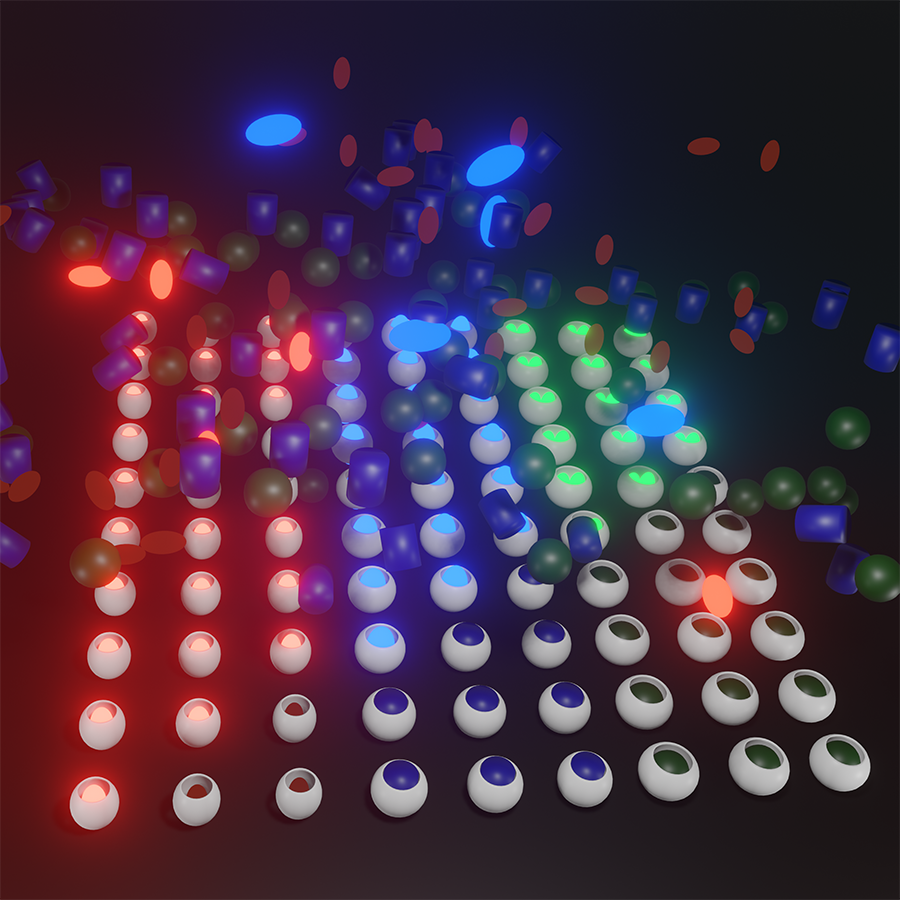
Application of Cucurbit[n]urils Immobilization in Chemosensor Microarray and Molecular Electronics
-
Author:
Chunting Zhong
-
Source:
Dissertation, Karlsruher Institut für Technologie (KIT) (2022)
- Date: 2022
-
Host-guest interaction has been used for developing materials and devices. The discovery, modification and immobilization of hosts or guests attract scientists, varying from chemistry, electrochemistry to biology. The synthesis of cucurbit[n]urils (CBn), one series of the new hosts, opens a new era due to the high binding affinity to their guests. The isolated CBn show more capabilities for chemosensors, electronics, building blocks including networks and nanostructures. In addition, they can be immobilized on the surface either directly by covalent binding after modification, indirectly through guest mediation or adsorption on Au through carbonyl, which provides in particular more interfacial functionality. The homogeneous CBn immobilization and micro/nanopatterning endow the modified surface with new properties. In order to construct biomimetic sensors with a cell-like environment, combination of CBn with lipid membranes seems feasible.
Molecular printing including soft lithography and scanning probe lithography can transfer materials onto the specific area of the surface with controlled features. The development of these approaches meets the requirements of low cost, large-scale patterning in a short time, flexibility for multiplexing and reprinting. Their applications cover materials processing in chemistry, biology and engineering. Supported lipid bilayers (SLBs) are an efficient way to construct biomimetic cell membranes as well as to mimic interfacial functions between cells and the outside environment. In principle, all the molecular printing techniques are able to transfer lipids onto surfaces and form patterns. However, also homogeneous SLBs prepared by solvent exchange and bicelle fusion can be used for large area covering in single composition and have a relatively low defect.
Host-guest chemistry has been used for conductance enhancement in electronics devices through changing the microenvironment of redox reactions on self-assembled monolayers (SAMs) and avoiding molecular rearrangement. For CBn, the effect on the conductance decreases when n increases. One common guest of CB8, methyl viologen (MV), can be reduced after loading a negative voltage and forms MV•+ radical. Redox dimer [MV•+]2 forms when the MV•+ molecules are close enough to each other. Coincidentally, CB8 stabilizes [MV•+]2 dimers, and has be detected in solution by electrochemical method, for example, cyclic voltammetry (CV). [MV•+]2 were proved having big hysteresis in negative bias, varying with different counterions in a circuit. MV SAMs with CBn functionalization have a potential as computing materials for resistive random access memories (RRAMs). However, the stability of the hysteresis needs to be improved to achieve real applications.
In this work, CBn/indicator chemosensors have been immobilized on surface first by modified CBn through microchannel cantilever spotting (μCS). The sensing properties of mono/multi-microarrays have been evaluated in dry and wet states. These CBn-based chemosensors were then immobilized by guest-mediation through surface-bound guests on alkyne substrates, followed by the detection of analytes. In order to solve the shortcoming of washable indicators and the weak readout of CBn assembly, a CB8/DAP rotaxane, with two β-cyclodextrin (CD) as stoppers on two sides to lock CB8/DAP from disassembly, was patterned on an isocyanate surface. The hydrophilic β-CD can avoid unspecific adsorption of DAP indicator, therefore increasing the readout signal. SLB were micropatterned by dip-pen nanolithography (DPN), polymer pen lithography (PPL) and μCS over the established chemosensor microarrays to imitate a sensing system in a cellular environment.
In conclusion, CBn/indicator chemosensor microarrays show high sensitivity for detection of non-chromophoric analytes through emissive indicator displacement assays (IDA) and the limit of detection (LOD) is down to nanomole. Immobilization of CBn solves the problem of signal interference by the displaced dye, where the displaced indicator can be simply washed away, compared with non-immobilized guest-mediated chemosensors. In addition, the integration of these CBn/indicator chemosensor microarrays into microfluidic chips provides an efficient way to enable real-timely monitoring the whole process of analyte detection at the liquid-solid interface, simplifies handling and reduces the amount of needed analyte. The multiplexing of microarrays shows the general advantage to detect multi-components through multi-CBn and/or multi-indicator use that respond differentially to different analytes. The CB8/DAP rotaxane microarray, with a fixed indicator inside CB8, shows remarkable sensitivity for L-tryptamine (L-Trp) detection and the LOD can be down to submicromolar concentrations. After covered with SLBs, the rotaxane system was able to evaluate the membrane permeability in a biomimetic cell-like setup. DOPS SALB covered microarrays showed slower fluorescence quenching, which demonstrated the slower transport of L-Trp through the membrane due to charge effects. CBn immobilization for chemosensors systems opens up its potential for integration of sensors into full-fledged lab-on-a-chip devices.
Towards the envisioned electronic applications, the isolated MV mediated CB8 was able to bring a second viologen from the solution and the absolute surface coverages of CB8, MV•+ and [MV•+]2 were detected through CV measurement. The surface density of CB8 (as well as [MV•+]2) on 5% MV SAM is 2.32 x 10-11 mole / cm2. It decreases to 0.13 x 10-11 mole / cm2 at 50% MV SAM and almost no CB8 can be immobilized for further [MV•+]2 formation due to steric effects. The eutectic Gallium-Indium (EGaIn) based junctions of 5% MV SAM showed a large unipolar hysteresis in the negative applied bias with a high current rectification ratio of 1.10 x 103 and an on/off state ratio of 3.16 x 104. The stability of the hysteresis has been increased because of the ideal microenvironment provided by CB8, which avoids the rearrangement of MV and interference from surrounding molecules, compared with 100% MV SAMs. Furthermore, CB8 enhances the charge transport of MV•+ resulting from large intermolecular LUMO-LUMO coupling and this increases the conductance of the junctions even with low [MV•+]2 densities. CB8/MV2 molecular junctions have high potential as a constituent of resistive random access memories (RRAMs). The concept of host-guest chemistry is possible to be applied for development of novel semiconductor chips such as CMOS (complementary metal-oxide semiconductor) in the future.
